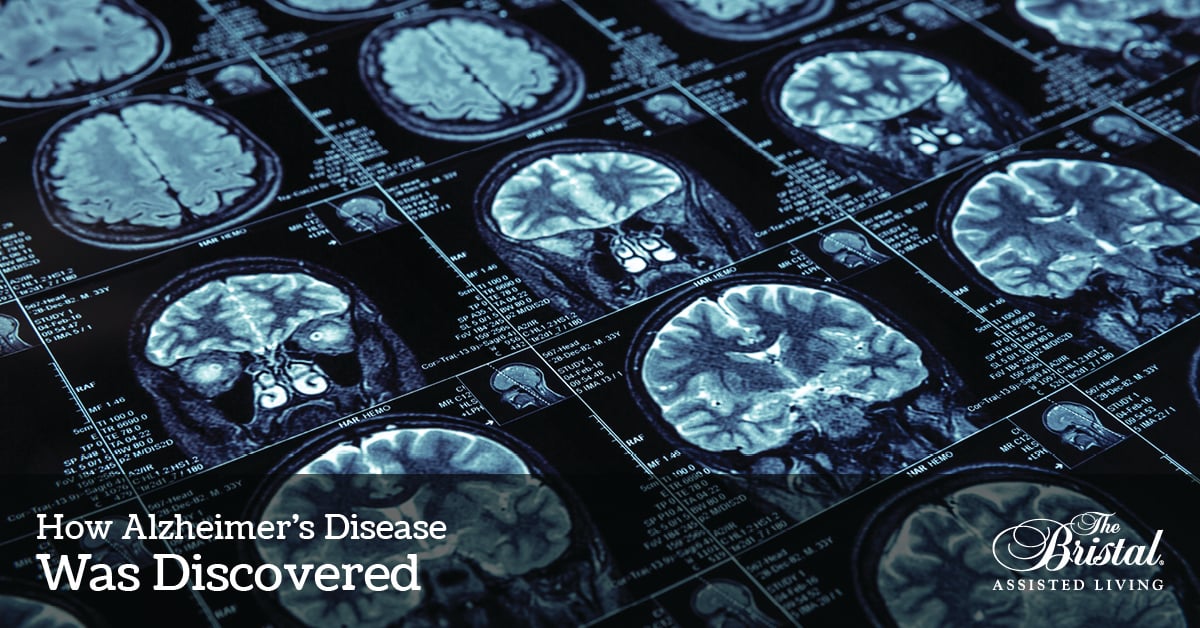The neurodegenerative disease we call Alzheimer’s is named for the German physician Alois Alzheimer, who first identified and described it more than a hundred years ago.
In 1901, Dr. Alzheimer, grief-stricken because of the recent death of his wife, plunged himself into clinical work with extraordinary fervor. To divert his mind from sorrow, he began personally examining all new patients admitted to his Frankfurt-based hospital at length, compiling extensive documentation on their conditions and prognoses.
Among the patient examined by Dr. Alzheimer was Auguste Deter, a 50-year-old woman experiencing memory loss, suspicion, agitation and other extreme psychological problems. After Auguste died in 1906, Dr. Alzheimer -- now working in Munich -- had the opportunity to do a post-mortem examination of her brain.
Using a microscope, Alzheimer saw odd substances and structures (later called plaques and neurofibrillary tangles), in Auguste’s brain matter. He then was able to convince noted psychiatric practitioners in Germany that these plaques and tangles – together with the clinical symptoms and course of the illness – had never been seen before. In the following years, Dr. Alzheimer, along with Gaetano Perusini, a research colleague, published more case studies, with their findings being further validated in 1908 through inclusion in the noted textbook Psychiatrie.
Since Dr. Alzheimer’s premature death in 1915, science has credited him with his groundbreaking discovery, which set the standard for understanding neurodegenerative disease.
Other milestones in Alzheimer’s research
Research into Alzheimer’s disease has been ongoing during the 20th and 21st centuries. The 1931 invention of the electron microscope – which made it possible to magnify images of brain tissue up to 1 million times – has enabled further direct study; in the 1960s, researchers developed a measurement scale to assess the decline of cognition and function in older adults. Together, these tools allow for the correlation of behavioral impairments with educated guesses about brain lesions and tissue damage.
By 1976, medical science recognized Alzheimer’s disease as the most common form of dementia. Eight years later, two researchers, George Glenner and Caine Wong, identified “beta-amyloid” – the protein fragment making up most of the plaque material seen in the brains of people suffering from Alzheimer’s disease. Soon after, a second protein called “tau” was determined to be responsible for the tangles that are the other important marker of the disease.
What causes Alzheimer’s disease?
While these discoveries are important and fruitful, the causes of Alzheimer’s disease are still not fully understood by medical science.
Science continues to develop improved ways to study the plaques, tangles and other features of Alzheimer’s, through advanced brain imaging techniques and discoveries in genetics. For people with late-onset of the disease, the APOE gene, which takes several forms, seems to play a part. However, simply carrying the gene does not mean a person will certainly go on to have the disease.
Risk factors for the disease include age, genetics, environment and lifestyle factors, with the impact of each factor varying for any given individual. Vascular conditions, such as heart disease, stroke and hypertension may be involved in cognitive decline, as well as metabolic conditions, such as diabetes. Healthy eating, exercise, getting enough high-quality sleep and staying socially engaged and mentally stimulated are associated with remaining well with increasing age, and may reduce the risk of cognitive decline. Clinical trials are studying all of these areas.
The search for new treatments – along with research addressing the underlying disease process in hopes of preventing or postponing onset – is flourishing. Clinical trials of various behavioral and drug interventions are underway. Volunteering to participate in a clinical trial can help science progress toward better treatment – and perhaps, even a cure – for Alzheimer’s disease. To find out more, talk to your physician about local studies, or visit the ADEAR website (Alzheimer’s disease Education and Referral Center), a service of the National Institute on Aging, and search for clinical trials in your area.



